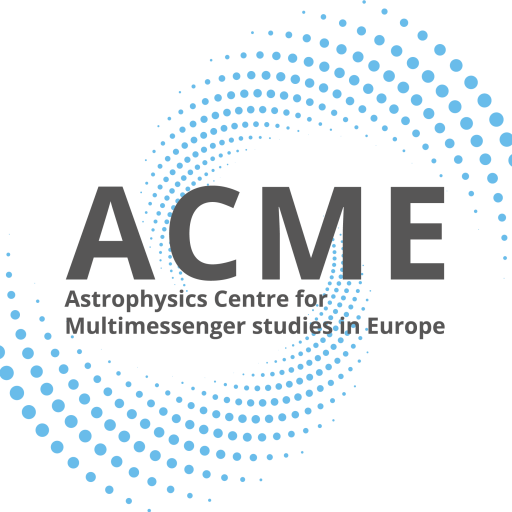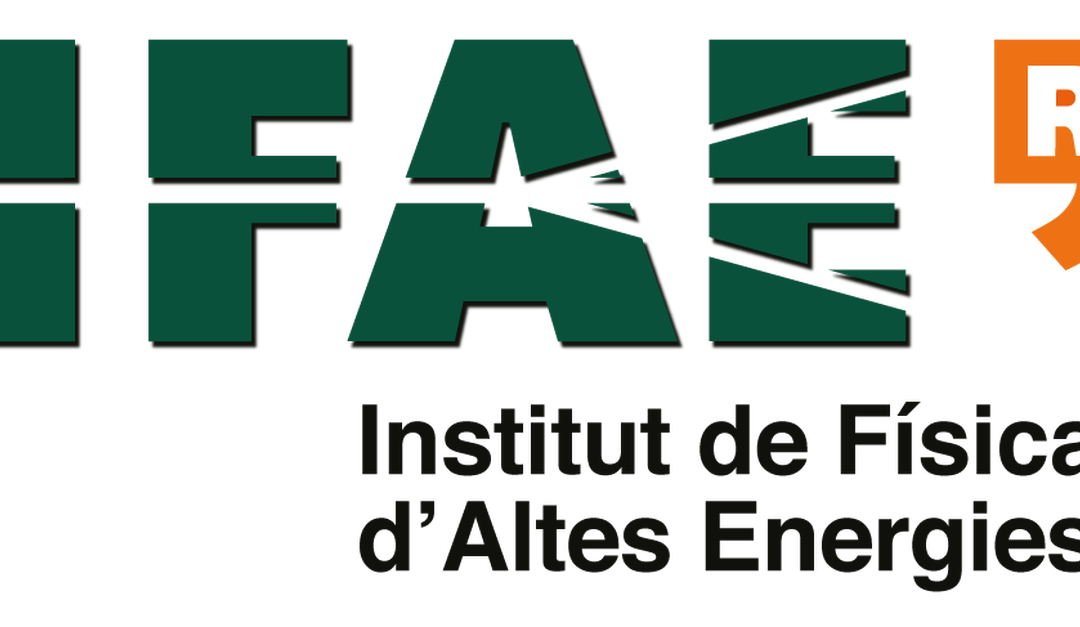The Institut de Física d’Altes Energies (IFAE) is a consortium of the Generalitat de Catalunya and the Universitat Autònoma de Barcelona (UAB), founded in 1991. Its multidisciplinary efforts cover high-energy particle and astroparticle physics, cosmology, and the development of technologies for the benefit of society. IFAE plays a key role in major international collaborations, including: the ATLAS experiment at CERN’s Large Hadron Collider (LHC) for particle physics; the Cherenkov Telescope Array Observatory (CTAO) and the Major Atmospheric Gamma-ray Imaging Cherenkov (MAGIC) for high-energy gamma-ray astronomy. The astrophysical portfolio of the institute is completed by a cosmology (DES, Euclid) and a gravitational wave (Virgo, Euclid) groups. The theory department of IFAE conducts world-class research in high-energy theoretical physics, addressing fundamental questions in particle physics, quantum field theory, astrophysics, and cosmology. Besides its efforts in fundamental physics, IFAE also hosts a quantum technology group and spin-off companies developing cutting-edge instrumentation for industrial and medical applications.
Main contact for TNA call: Cosimo Nigro
Available expertise
The gamma-ray astrophysics group at IFAE has led the design, construction, technical operation, and scientific activity of the latest generations of ground-based Imaging Atmospheric Cherenkov Telescopes (IACT). The group is one of the founding members of the Collaboration operating the MAGIC Telescopes, for which it provided several key hardware, software, and data management resources. It is also leading the construction and commissioning of the Large-Sized Telescopes (LSTs) of the next-generation CTAO. IFAE’s gamma-ray group has been consistently involved in the development of reconstruction and analysis software for IACTS, and a contributor – in synergy with the Port D’informaciò Cientifica (PIC), to the processing and management of both MAGIC and LSTs data.
IFAE participates in the Astrophysics Centre for Multimessenger studies in Europe (ACME) as one of the nodes of the expertise center in high-energy and very-high-energy gamma-ray astronomy (JCE-GaHE/VHE). Within the framework of ACME, IFAE is committed to provide transnational and virtual access (TNA and VA) to VHE (E > 100 GeV) gamma-ray data from the MAGIC telescopes. In addition to the access to the MAGIC data, IFAE offers – through tutorials, hands-on sessions, and mentoring – the tools necessary for their analysis and interpretation. More specifically, our institute offers:
-
access to over two decades of MAGIC observational data. These will be provided in a high-level standardized data format compatible with open-source analysis tools such as Gammapy, thus facilitating seamless integration into multi-messenger workflows;
-
guidance in preparing observational proposals to gather new MAGIC gamma-ray data;
-
tutorials and hands-on sessions for analyzing high-level standardized gamma-ray data using the open-source software Gammapy;
-
support on multi-wavelength and multi-messenger interpretation with tools such as agnpy, modeling the non-thermal emission from relativistically-moving plasma in astrophysical sources;
-
financial support for scientists to visit IFAE, typically for up to 10 working days, to engage presentially in the previous activities.
Applications for TNA and VA can be submitted via this link [placeholder]. Proposals should clearly outline the intended activities, including specific goals, required resources, and the duration of the visit (short, 5 days, or long, a month) and will be reviewed by a committee of experts based on scientific merit, feasibility, and alignment with the objectives of ACME. Selected applicants will be provided with the necessary logistical support to facilitate their visit.). The primary aim of these efforts is to broaden opportunities for scientists to exploit European-funded and international gamma-ray astronomy facilities and archives, fostering the advancement of multi-messenger astrophysics across Europe.
Available tools
The gamma-ray group at IFAE will provide comprehensive support for the entire process from data reduction and analysis to interpretation. The tools and expertise we offer are:
• VHE gamma-ray data from the MAGIC telescopes. TNA and VA access will be provided to proprietary MAGIC data. Two decades of archival data may be complemented by new data collected through observational proposals that the institute will help prepare. The data will be provided in a standardized high-level format ready for scientific analysis.
• Gammapy. Gammapy is an open-source python package designed for data reduction and statistical analyses of astronomical gamma-ray data. By supporting a standardized data format for gamma-ray astronomical data, it allows for the seamless combination of data from both ground-based and space-based observatories, thus facilitating multi-instrument analysis and interoperability. IFAE’s gamma-ray group has participated both in the development and the validation of Gammapy and has therefore extensive knowledge of the software. The group will provide tutorials and hands-on sessions to illustrate the analysis of MAGIC, and Cherenkov Telescopes in general, data with Gammapy. Additionally, we will illustrate how to perform multi-instrument analyses by combining MAGIC data with other publicly available gamma-ray data sets (e.g. Fermi-LAT; H.E.S.S., HAWC, CTAO).
• Agnpy. agnpy is an open-source python package for modeling the non-thermal emission from relativistically-moving plasma in astrophysical sources, such as jets of active galactic nuclei (AGN). It provides routines to compute the non-thermal emission from relativistic protons and electrons accelerated in the jets, as well as simple implementations of the thermal emitters of the galaxy. Designed for compatibility with modern gamma-ray data-analysis tools such as Gammapy, agnpy supports multi-wavelength and multi-messenger modeling, enabling detailed studies of AGN emission and its interaction with the surrounding environment that can be expanded in the multi-messenger scenario.
Involved scientists



